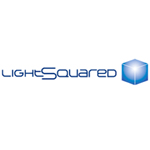SellTower Signals
Is “Bad Press is Better Than No Press”?
First they point out that LightSquared does not have a network…yet. They then move on to the prohibitive cost of deploying a network. Staying in the technical arena, the next complaint is the lack of user devices. A second round of GPS scare tactic articles have also been released. Finally, the AT&T (NYSE:T) acquisition of T-Mobile removes a potential large customer.
So should LightSquared just give up now?
The lack of a network and user devices was true of every successful telecommunication carrier at their beginning. Yet networks and devices ultimately proliferated. The incredible growth rates in data usage combined with the new 4G LTE technology actually provide the kind of opening that a new entrant needs. Talks with Sprint (NYSE:S) provide some very interesting options for LightSquared network deployment as well.
The regulatory situation just shifted twice in LightSquared’s favor. The loss of T-Mobile as a potential customer (I still expect a roaming agreement with AT&T) is offset by the FCC and DOJ need for a viable new wireless option to justify such a large acquisition.
Related to the GPS interference issue, right in the middle of the GPS hype, the FCC granted LightSquared’s waiver to integrate terrestrial broadband network wireless services with satellite communications while requiring an interference study. LightSquared and the USGIC are working cooperatively on an overall analysis and interference test plan. They are filing joint monthly reports with a final report due June 15, 2011.
The fact that LightSquared is moving forward with its network deployment is a good indication of their view of the results thus far. While LightSquared opponents focused on the GPS issue are busy declaring unprecedented interference problems, a close look at their small print reveals admissions that the extent of the issue cannot be known until they see the actual antenna siting plans. That does NOT sound like a ubiquitous problem to me.
If there ever was an opportunity for a nationwide LTE wholesale play, this is it.

















